Happy Friday! Lin-Manuel Miranda’s next project is reportedly an adaptation of Martin Scorcese’s 1977 film, New York, New York.
Finally, a Broadway musical about the Big Apple!
Quick Hits: Today’s Top Stories
-
Magistrate Judge Bruce Reinhart issued an order Thursday mandating the Justice Department unseal a redacted version of the affidavit used to justify the search of Donald Trump’s Mar-a-Lago estate earlier this month. The order requires prosecutors to make the document public by 12 p.m. ET today, but it’s unclear how much information it will actually contain after Reinhart approved redactions related to the identities of witnesses and the investigation’s “strategy, direction, scope, sources, and methods.”
-
Russian President Vladimir Putin issued a decree on Thursday ordering the Russian military to boost troop levels by 137,000 to 1.15 million as the country’s military—which has taken enormous casualties in recent months—prepares for an extended conflict in Ukraine. The decree did not specify where the additional recruits would come from, or the rationale for the increase.
-
With China’s provocations and rhetoric growing increasingly aggressive in recent months, Taiwanese officials on Thursday unveiled a proposal to boost the island’s military budget 13 percent—the largest year-over-year increase since 2007—and allocate an additional $3.6 billion in “special expenditures” to purchase fighter jets, missiles, naval ships, and weapons systems. Taiwan’s Ministry of National Defense also said yesterday it will install a drone defense system next year after a video of Taiwanese soldiers throwing rocks at a drone—thought to be piloted by a Chinese civilian—flying over a Taiwanese military post went viral.
-
A report published this week by Graphika and the Stanford Internet Observatory indicated that Twitter and Meta, for the first time, recently removed a set of fake accounts from their respective platforms for “using deceptive tactics to promote pro-Western narratives in the Middle East and Central Asia.” The influence campaign had reportedly been active for years, promoting the interests of the United States and its allies, spreading anti-extremism messaging, and opposing countries like Russia, China, and Iran. Neither tech platform directly attributed the activity to the U.S. government, but the U.S. and United Kingdom were listed as the “presumptive” countries of origin.
-
Alondra Nelson, the head of the White House Office of Science and Technology Policy, issued guidance on Thursday recommending that, by 2026, every federal agency update its public access policies to ensure all scientific research funded by taxpayers is available for free immediately after publication. “The American people fund tens of billions of dollars of cutting-edge research annually,” she said. “There should be no delay or barrier between the American public and the returns on their investments in research.”
-
The Internal Revenue Service issued a notice on Wednesday announcing it will refund $1.2 billion in late-filing fees on 2019 and 2020 tax returns due to complications related to the pandemic. The move supposedly affects 1.6 million individual and business taxpayers, and the credits/refunds will be processed automatically.
-
The Bureau of Economic Analysis released its updated estimate of Q2 GDP on Thursday, finding the U.S. economy contracted less than previously thought. U.S. gross domestic product is now believed to have fallen at a 0.6 percent annual rate from April to June, rather than the initial 0.9 percent estimate.
-
The Labor Department reported Thursday that initial jobless claims—a proxy for layoffs—decreased by 2,000 week-over-week to a seasonally adjusted 243,000 last week, holding steady near the measure’s highest level this year as the tight labor market continues to slacken.
-
The average number of daily confirmed COVID-19 cases in the United States has declined about 14.5 percent over the past two weeks according to the CDC, while the average number of daily deaths attributed to the virus—a lagging indicator—decreased approximately 15 percent. About 32,900 people are currently hospitalized with COVID-19 in the U.S., down from approximately 37,000 two weeks ago.
Is the ‘Red Wave’ Lost at Sea?
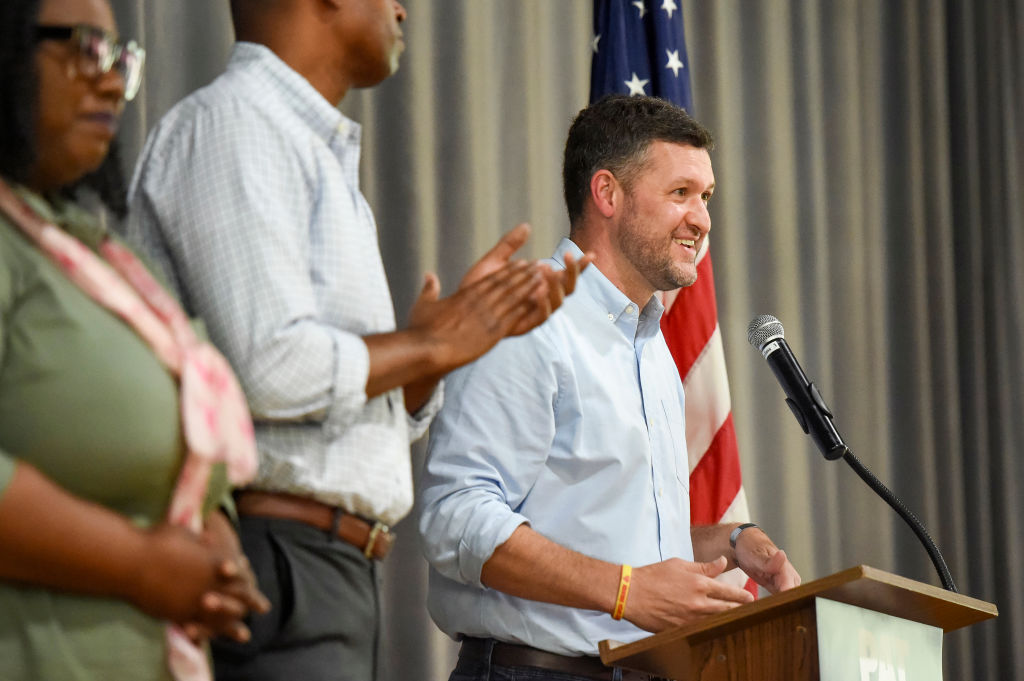
Political fundraising emails aren’t known for understatement even in the best of times, but a GOP appeal this week reeked of true desperation: “We’re completely devastated. … Republicans are now in serious danger of LOSING EVERYTHING. Democrats have the momentum.”
A little panicked prose presumably gets the donor dollars flowing, but the copywriters do have a point: While Republicans aren’t likely to LOSE EVERYTHING in the midterms, a Democratic win in New York’s bellwether 19th congressional district on Tuesday suggested that Democrats may still have a chance of avoiding the full-on shellacking that’s been predicted for months.
When Democrat Antonio Delgado left his seat in the district to become New York’s lieutenant governor in May, he set up a fascinating special election. Barack Obama won the 19th in 2012, Donald Trump took it in 2016, and Joe Biden reclaimed it by about 1.5 points in 2020. It’d be an uphill climb for Democrats to hold onto the seat, though, given the traditional headwinds facing the president’s party in midterm elections. Biden’s approval rating has recovered somewhat from its late-July nadir, but it’s still barely above 40 percent, so Tuesday’s special election seemed like a good place for Republicans’ much-anticipated “red wave” to begin to crest.
But Pat Ryan, the Democratic candidate, defeated Republican Marc Molinaro by about 2 percentage points, 51 percent to 49 percent. While Molinaro centered his campaign on crime and inflation, Ryan pivoted this summer to to focus on the fight for abortion access after the Supreme Courts’ Dobbs ruling. “Choice was on the ballot,” Ryan said in a victory statement. “Freedom was on the ballot, and tonight choice and freedom won.” Ryan will serve out the remaining four months of Delgado’s term, and, thanks to redistricting, both he and Molinaro will be back on the ballot in separate, competitive districts come November.
Before we extrapolate a national picture from this result, some caveats. First, it’s never wise to read too much into special elections which, like primaries, typically see low voter turnout. Making predictions based on a single special election is even more perilous. “Special elections, as the adage goes, are special,” J. Miles Coleman—associate editor at Sabato’s Crystal Ball—told The Dispatch. “It comes back to running candidates who fit the area.” Even setting national trends aside, Ryan was a solid Democratic nominee. He’s a fifth-generation resident of the district, served two combat tours in Iraq, and has been a county executive since 2019. Molinaro, the Republican, was also considered a strong candidate, himself a county executive with high name ID after being the GOP nominee for governor in 2018.
But Tuesday’s result was not a one-off. After Ryan’s victory in New York, Democrats have now outperformed Biden’s 2020 results in four straight special elections, all taking place since the Supreme Court overturned Roe v. Wade in late June. According to a FiveThirtyEight analysis, Democratic candidates have performed an average of 9 percentage points better than expected in those races. Republicans don’t need to smash the panic button yet—the economy remained voters’ top issue in a Pew Research study published this week—but concerns about abortion policy in a post-Roe world are quickly becoming a thorn in the GOP’s side. In March, 43 percent of voters listed abortion as “very important” to their 2022 vote. By August, that number had climbed to 56 percent—driven almost entirely by Democratic voters.
President Joe Biden seems to be aware of this data as he returns to the campaign trail. “I want to be crystal-clear about what’s on the ballot this year,” he said at a Democratic National Committee rally in Rockville, Maryland, last night. “Your right to choose is on the ballot this year. The Social Security you paid for from the time you had a job is on the ballot. The safety of our kids from gun violence is on the ballot.”
He went further at a fundraiser earlier in the day, differentiating between what he called “MAGA Republicans” and “real Republicans” in a way a spokesperson for the RNC would later condemn as “despicable.”
“What we’re seeing now is either the beginning or the death knell of extreme MAGA philosophy,” he told Democratic donors gathered for the event. “[And] it’s not just Trump. It’s the entire philosophy that underpins the—I’m going to say something—it’s like semi-fascism.”
That’s some aggressive rhetoric from someone who campaigned for president on a need to restore a sense of national unity, but it’s also unfortunately par for the course in today’s political environment—and highlighting what he labeled Republican extremism worked for Ryan in New York. After the Democrat’s surprising victory on Tuesday, Cook Political Report adjusted its rating for the district he’ll run in next from “toss up” to “lean Democrat,” while Molinaro’s upcoming race remains a “toss up.” In May, Cook predicted Republicans would gain 20 to 35 House seats in November. It now sees a 10-to-20-seat gain as much more likely—with Democrats maintaining control “not out of the question.”
The revised House forecasts come as Senate Republicans are facing similar questions about their ability to pick up just one seat—all they need to flip the chamber. “This year may still be good for the Republicans,” Coleman said. “But it may not be as good of a year for Republicans.” And after months of pundits on both sides of the aisle treating the prospect of House Speaker Kevin McCarthy and Majority Leader Mitch McConnell as givens, Democrats will take that as a win.
Frantic fundraising emails aside, GOP officials aren’t buying the hype. Rep. Tom Emmer, chair of the National Congressional Campaign Committee (NRCC), circulated a memo Wednesday arguing that, because the special election coincided with regular New York primaries, Republicans were at an inherent disadvantage. “As a historically blue state, the primary often serves as the general election for New York Democrats,” he wrote. “This means New York Democrats historically turn out at much higher rates for primaries.”
“If this were a general election race, Republicans handily would have won,” Emmer continued. “We are in an excellent position heading into the midterms.”
As always, it’s important to remember there’ll probably be about 300 news cycles between now and the last day of voting in 75 days. Inflation could get better or worse, the war in Ukraine could escalate or come to a standstill, Donald Trump could face criminal charges and/or announce a presidential bid. Today’s relatively optimistic projections for Democrats are no more set in stone than the Republican exuberance from earlier this summer.
And while Democrats have over-performed expectations in multiple special elections, Coleman did point out that Republicans have seen better voter turnout in primaries, “which is often an indicator of how the fall is going to go.”
“It’s going to be interesting to see which side sort of wins out.”
Work-From-Home is Here to Stay
After about two years of remote work, Apple really, really wants its Bay Area employees to come back to the office—and Apple’s Bay Area employees really, really don’t want to do that.
CEO Tim Cook recently told employees they’ll be required to work in-person on Tuesdays and Thursdays starting in September, plus a third day decided on by their team. But nearly 1,000 employees have signed a petition asking Cook to let employees decide with their managers which days to work in-person. They may not prevail, but even Cook’s proposed hybrid plan reflects that—for the categories of employees who can telework—remote work is here to stay.
About 7 percent of employed Americans are still working remotely specifically because of COVID-19, according to the Bureau of Labor Statistics. But employees who plunged into remote work during pandemic lockdowns—many for the first time in their careers—increasingly cite other reasons for wanting to stick with it: no commute, better focus, flexibility to manage a chronic illness or watch a child, freedom to live somewhere cheaper or close to family. The Apple employee petition doesn’t even specifically mention COVID-19.
In a spring McKinsey survey of 25,000 Americans, 58 percent reported having the option to work from home at least one day a week. Whether they liked remote work depended on their circumstances: People under 34 were more likely to report mental health trouble while working fully remotely, while people with children were more likely to report hostile work environments (toddlers are a menace). Nevertheless, 87 percent of surveyed workers with a telework option took it.
The top brass often disapproves. A March survey of New York-based executives found 76 percent thought in-person work essential to the bottom line. “If you want a job, stay remote all the time,” investment bank executive Rich Handler wrote in June. “If you want a career, engage with the rest of us in the office.” (The fact that he wrote this in an Instagram comments section detracted slightly from his authoritative tone.) But facing increased demands for flexibility in a tight labor market, companies have adjusted. Job listings site Indeed reports that listings advertised as remote on its site have tripled since the pandemic.
It’s hard to judge whether bosses are right about the bottom line concerns. In one study of tech company workers, employees randomly assigned to work from home two days per week wrote 8 percent more code, and attrition dropped by 35 percent. But other research is more mixed—some studies find work-from-home employees working longer and accomplishing more, others the opposite.
Pre-pandemic, the U.S. already had about a 19 percent office vacancy rate. Property management company Kastle now reports only about 44 percent office occupancy in 10 of the nation’s largest cities. Those extra empty cubicles hurt office landlords, but also affect the restaurants, barbershops, and public transportation networks that cater to commuters. Since 2019, for instance, salad chain Sweetgreen has adjusted its store footprint from 65 percent urban and 35 percent suburban to about 50/50.
But the damage to downtown businesses depends heavily on the city. University of Toronto researchers tracking 62 North American cities reported this spring that activity in downtown stores and restaurants had rebounded beyond pre-pandemic levels in four U.S. cities, and recovered to more than 75 percent of pre-pandemic levels in 12 more. San Francisco trailed the pack at 31 percent recovery.
For better and worse, heads of office-based companies are adjusting. “People don’t like commuting, but so what?” JPMorgan Chase CEO Jamie Dimon said in May 2021. By this April, he’d softened his tone. “It’s clear that working from home will become more permanent in American business,” Dimon wrote to investors. About 50 percent of his company’s employees will continue working hybrid or fully remote.
Worth Your Time
-
For many people without student loans, the sense of unfairness that accompanies President Biden’s decision this week is more experiential than financial. In an essay for Reason, Fiona Harrigan recounts spending her final years of high school taking the ACT and SAT five times to get a score high enough for merit scholarships, throwing away her “dream” list of schools and rewriting a “realistic” one, and ultimately settling on living at home and commuting to the local public university. “I took on heavy course loads and cashed in on AP credits to finish school a semester early. I didn’t study abroad in college. I dropped a second major and elected not to participate in language programs and research opportunities so I could finish school earlier,” she writes. “[Biden’s announcement] leaves me wondering which opportunities I unnecessarily gave up in the name of saving and scrimping. Could I have learned another language? Lived abroad? Taken an additional major? Conducted more independent research? Spent more time building professional connections rather than speeding through required courses?”
Presented Without Comment
Also Presented Without Comment
Toeing the Company Line
-
Donald Trump should not be trusted with classified information, Klon argues in Thursday’s edition of The Current (🔒). “Some will reject this out of hand and will attribute my critique to ‘Trump Derangement Syndrome,’ political naivete, or just plain stupidity,” he writes. “But my recommendation that this man never again be allowed anywhere near state secrets—or the Oval Office—is based on a pure, hard-nosed assessment of the situation.” Plus: How big a deal is that Twitter whistleblower?
-
Drowning in book tour responsibilities, Chris promises to be “back and ranker than ever next week.” But he still managed to cobble together a slimmed-down Stirewaltisms (🔒) yesterday with his AEI colleague Nate Moore. “I am most eager to get back to writing about the news rather than the news about the news,” Chris says. “And with just 75 days to go until the midterm elections, it couldn’t happen at a better time.”
-
On today’s episode of The Dispatch Podcast, Jonah, David, and Declan talk student loan forgiveness and the end of primary season. Has Florida—home of Florida Man—somehow managed to maintain pretty normal politics? Why does Declan feel like he is “legitimately losing his mind?” Is calling Anthony Fauci an “elf” fair game?
-
On the site today, Mindy Belz details the latest humanitarian failure in the U.S. withdrawal from Afghanistan, Andrew Fink digs into the hyperbolic rhetoric of Russia’s defense minister, and Brian Riedl looks at the weak Republican response to Biden’s student loan debacle.
Let Us Know
Did you ever shift to working remotely during the pandemic, and if so, are you still doing so? If you’re back in the office, was it on your own volition or required by your employer?
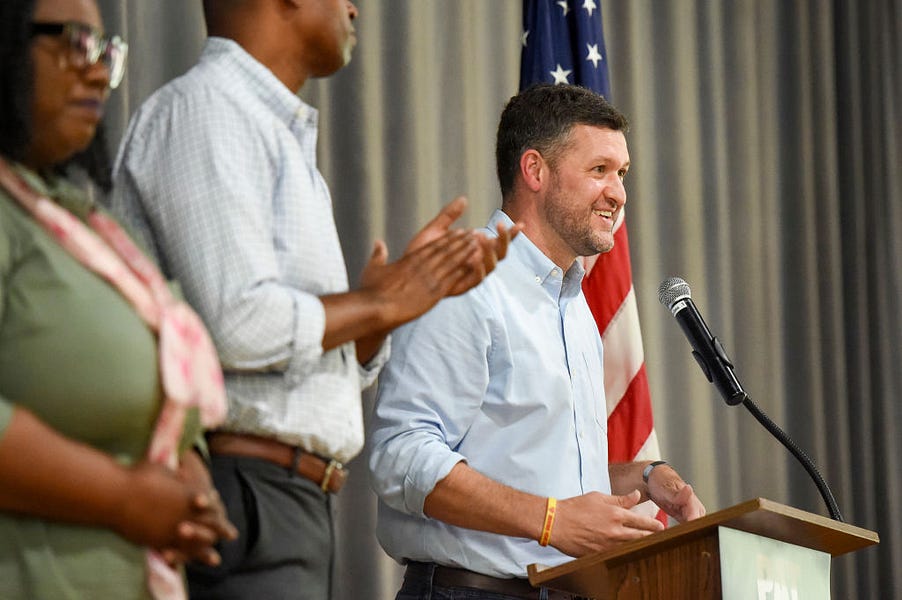


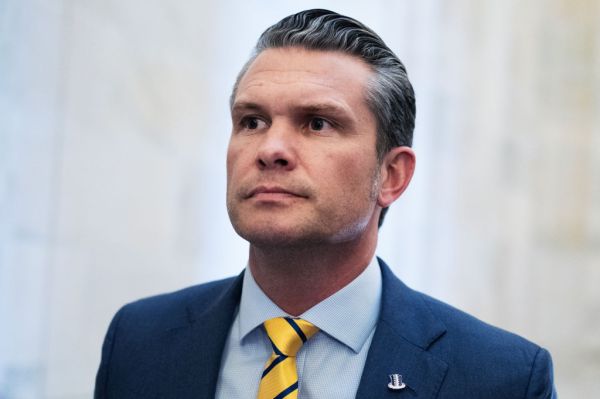
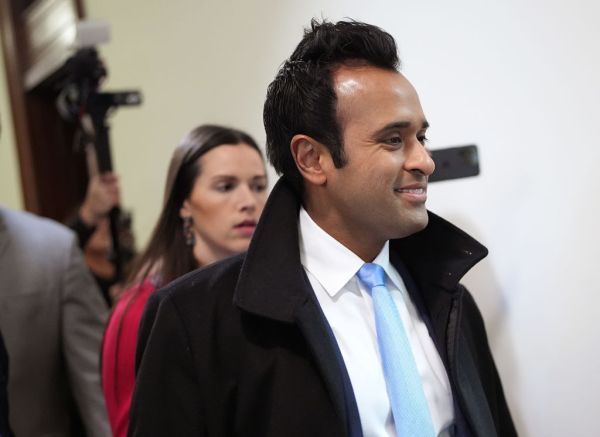

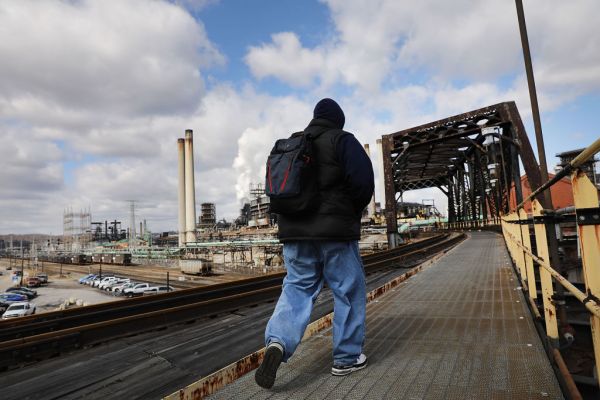


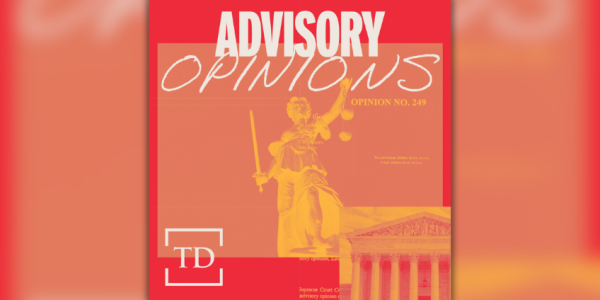
Please note that we at The Dispatch hold ourselves, our work, and our commenters to a higher standard than other places on the internet. We welcome comments that foster genuine debate or discussion—including comments critical of us or our work—but responses that include ad hominem attacks on fellow Dispatch members or are intended to stoke fear and anger may be moderated.
You are currently using a limited time guest pass and do not have access to commenting. Consider subscribing to join the conversation.
With your membership, you only have the ability to comment on The Morning Dispatch articles. Consider upgrading to join the conversation everywhere.